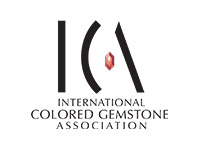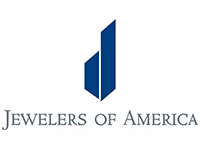
Education
Deep Dive into Sapphire
FMC brings you all the details you need know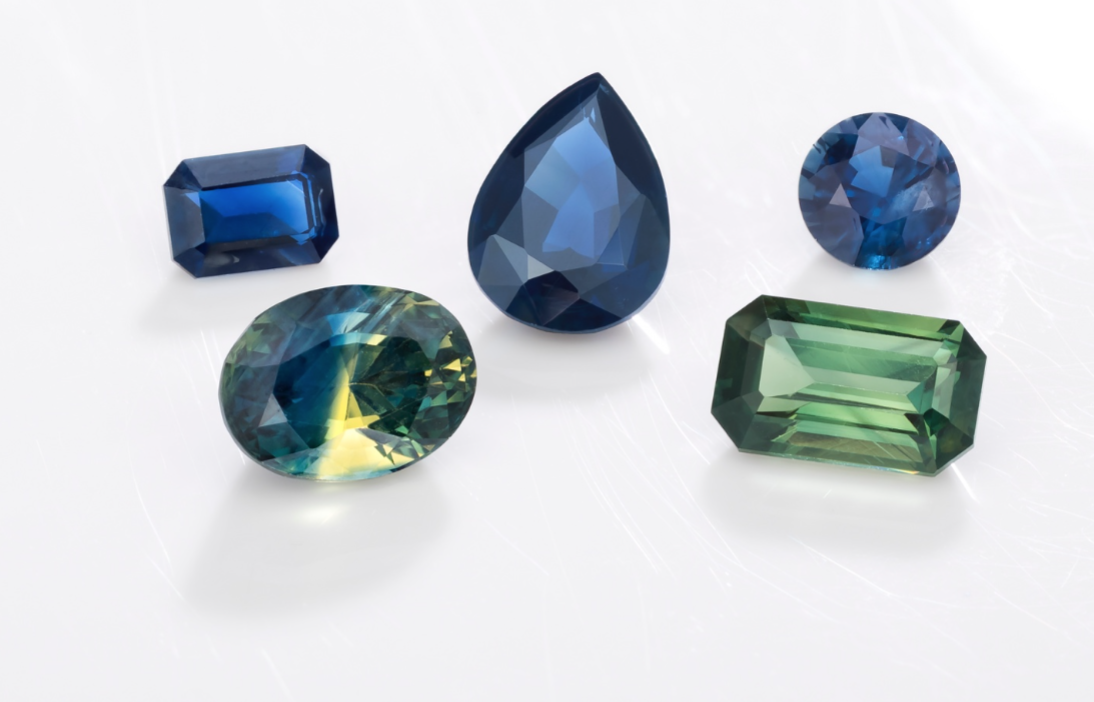
Sparkling like the South Pacific in the sun, sapphire is famous as the world’s most beautiful blue gem. But sapphire is much more than a single hue: all the rainbow colored gems of the mineral corundum are sapphires except for red, which is ruby. Festive Parti Sapphires even have multiple colors in a single gem.
Is blue sapphire your favorite gemstone? You aren’t alone: sapphire is the most popular colored gemstone and blue is the most popular sapphire color. In a recent survey by MVI Marketing, 40% of young consumers said blue sapphire was their favorite gemstone. Consumers are interested in learning more about unusual colors of sapphire too. In fact, 78% of consumers say they love or like Parti Sapphire.
Sapphire has long been associated with heaven. The ancient Persians believed the earth rests on a giant sapphire which colors the sky blue. The ancient Greeks associated sapphire with wisdom. The symbol of truth, faithfulness and the soul, the gift of a sapphire is a promise to be true.
That symbolism adds romance to sapphire engagement rings. That’s why sales of sapphire engagement rings are growing: 38% of young consumers in a recent survey said they are likely to choose a sapphire engagement ring. The world’s most famous engagement ring of all time is a sapphire too: the 18-carat sapphire engagement ring that Prince Charles gave to Princess Diana and Prince William gave to Kate Middleton.
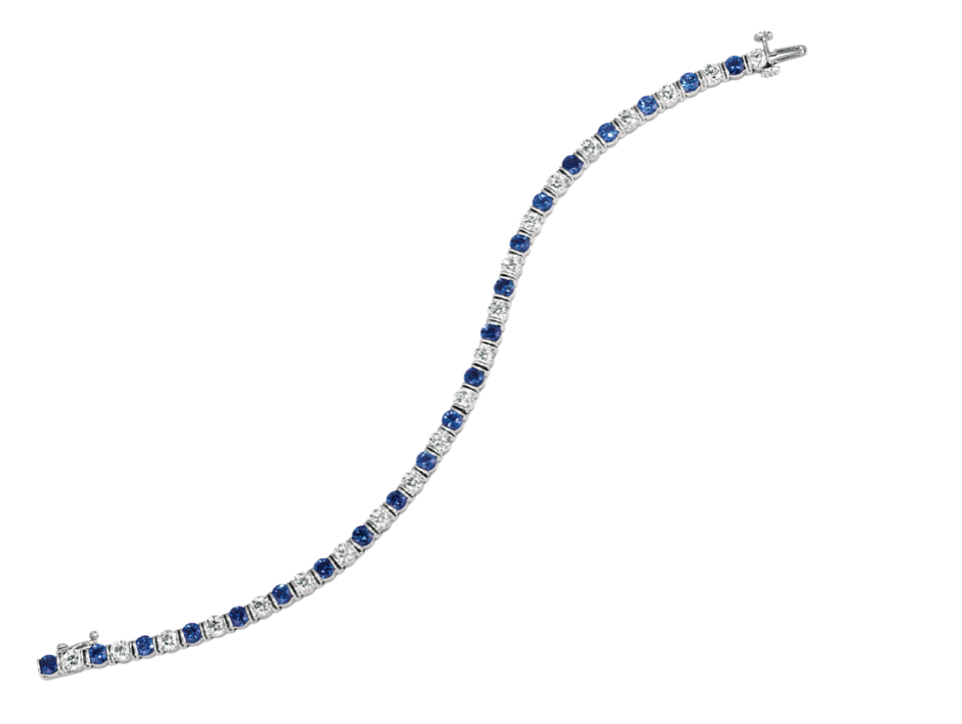
A wide range of sapphire jewelry is available for every occasion. Sapphire is often combined with diamonds in an alternating pattern to create beautiful anniversary rings, hoop earrings, and line bracelets. Oval sapphires surrounded by a halo of diamonds are popular for rings and pendants too.
Because sapphire represents truth and the soul, it’s a powerful reminder to be true to yourself and follow your dreams. Sapphire is also September’s birthstone and the gem of the 5th and 45th anniversaries.

Mining Sapphire in Australia
Traditional sources for sapphire include Sri Lanka, Kashmir, and Burma. The most important sources today are Australia, Madagascar, and Sri Lanka. The world’s largest sapphire miner is FURA, which responsibly mines sapphire in Australia’s rugged Outback. In 2020, Australia supplied about 70% of the world’s sapphire.
FURA Australian sapphires come in all the colors of Down Under: the blues and teals of the ocean, the yellow of the sun, the green of the grasslands, the earth tones of the outback and the black starry skies of the night sky. Color banding is very common in Australian sapphires. Sometimes rough crystals will contain stripes of blue, green and yellow. By orienting the rough carefully, cutters can reveal the unique multicolor blue, green and yellow sapphires called Parti Sapphire. That makes seven distinct colors to choose from.
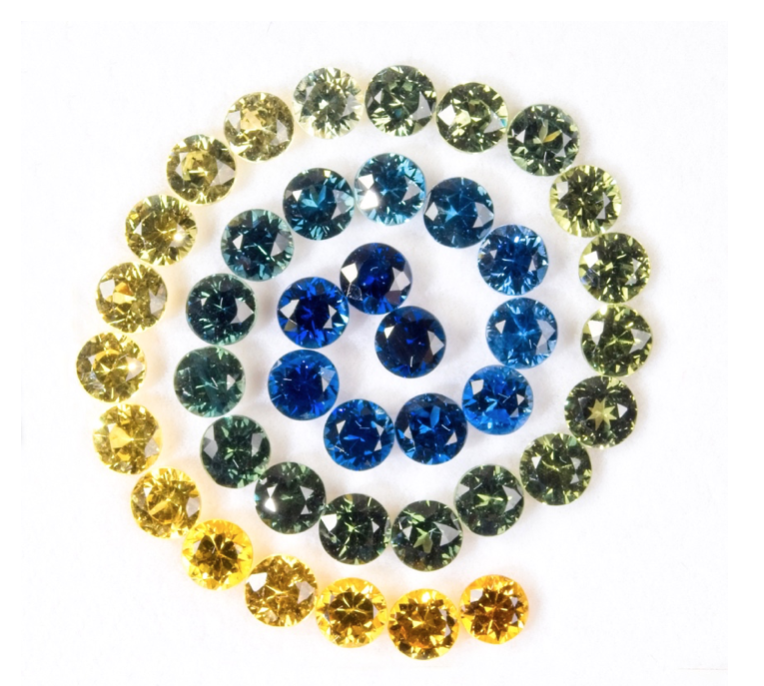
(© Commonwealth of Australia (Geoscience Australia) 2021. This product is released under the Creative Commons Attribution 4.0 International Licence. http://creativecommons.org/licenses/by/4.0/legalcode)
Australian sapphire has a long history. Sapphire was first discovered in the Anakie region of Queensland in 1875 by government surveyor Archibald John Richardson while he was working for the railway. He caught gem fever, quit his job and moved to Anakie, filed a claim, and started digging for sapphires. Prospectors like Richardson weren’t initially sure what gems they had discovered. At first, they thought the red zircons found in the gem gravels were ruby so they named the village in the area Rubyvale. Then they thought the green sapphires were emerald and named another town Emerald. Finally, they got it right and named a third town Sapphire.
In the late 1800s and early 1900s, most of the sapphires from Australia ended up in Europe. The Russian crown jewels and lots of jewelry belonging to Russian aristocrats contain gems from Australia. After the Russian revolution, Australia’s legacy of sapphire was forgotten. In the 1970s and 1980s, mechanized mining increased production dramatically, making Australia the world’s largest source of sapphires. Most people didn’t know the sapphires they were buying were Australian since sapphire origin usually wasn’t labeled.
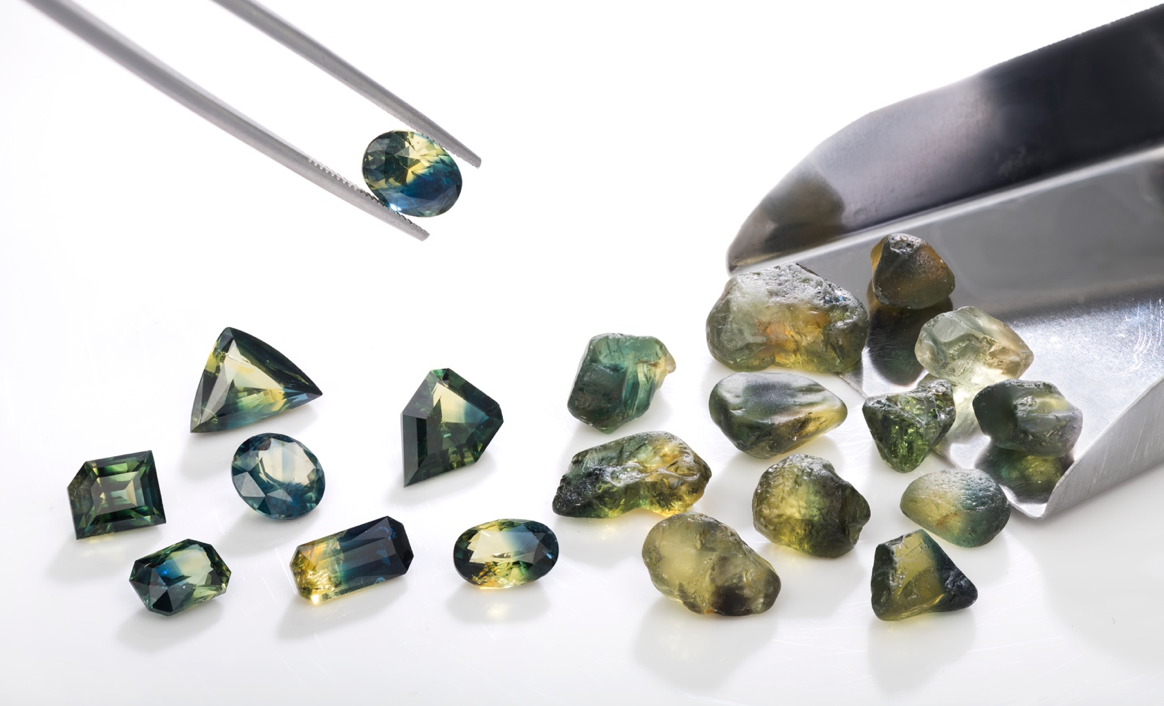
Today, FURA is proudly promoting the origin of its Australian sapphire. Consumers looking for responsibly mined gems appreciate the high standards for environmental and worker protection in Australia too. FURA’s Capricorn and Great Northern mines in the Anakie area using state of the art prospecting, mining, recovery and restoration techniques.
First, geologists map the distribution of the sapphire deposit to plan production to provide a reliable supply for customers. Then miners carefully remove the topsoil from the area, preserving it and recording its position so it can be restored after mining. Then miners dig down to with backhoes to access the sapphire-containing layer of alluvial gravel.
The gravel is then put through a high-tech automated plant to separate out the rough sapphire from other minerals in the gravel. The sorting plant uses the latest optical sorting technology to maximize recovery.

Once the sapphires have been removed, the remaining gravel is put back into place and the layers of soil and topsoil are put back above it. Then the area is replanted with native plants so the area’s biodiversity and habitat can return to its original state.
One of the largest sapphire crystals ever found in Australia, the 82.40-carat Tomahawk Tiger, was found near the FURA mine in Tomahawk Creek by a family who were looking for sapphire in a public gem-hunting park, a popular hobby in Australia. The Tomahawk Tiger has distinctive tiger stripes of green and yellow that shows how beautiful the pattern of colors in Parti Sapphire can be.
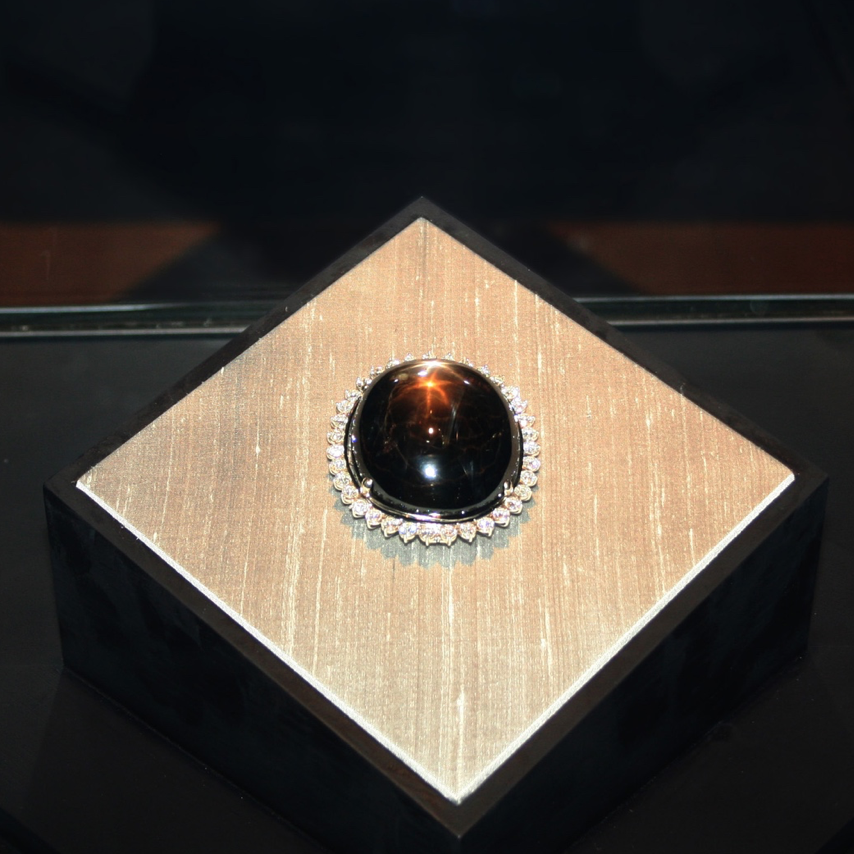
(Photo by Greyloch - https://www.flickr.com/photos/greyloch/2554268361)
Other famous gems discovered in the same area include the 169-carat Pride of Queensland, the largest faceted yellow sapphire ever found in Australia, and the Black Star of Queensland, a 733-carat black star sapphire. The 1,156-carat rough star was discovered in 1938 by 12-year-old Roy Spencer. His father used it as a door stop for many years before the family realized it was sapphire.
Communicating Sapphire Quality and Value
Sapphire quality is judged by the 4Cs: color, cut, clarity and carat weight. The most important thing for consumers to consider when buying a sapphire is its color. You can describe the color of any sapphire using three characteristics: hue, tone and saturation.
Hue is the color of the spectrum: one hue, like blue, or a combination, like yellowish green. Tone is the lightness or darkness of the color, say from a pale pastel blue to dark midnight blue. Saturation is the intensity of the color, ranging from dull slate to vivid peacock.
Sapphires with more vivid colors are more expensive. Sapphire blues include the colors of the sea and the sky, ranging from midnight blue to delicate pastel blue. In a recent survey, about half of consumers preferred the dark tones of blue sapphire to medium and light tones.
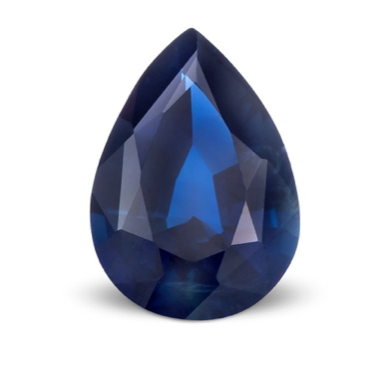
The best thing about sapphire is that the rainbow of options means everyone can choose the color that they like best. In recent years, teal sapphires have become very popular, especially in engagement rings, because consumers have fallen in love with the unusual blue-green hue. Sapphires in yellow, pink, purple and orange have a delicate beauty that is in demand too. Multicolor Parti Sapphires have an artistic look that grabs attention. All of them have unique personalities that are easy for consumers to love.
Because the color of sapphire is so strong, inclusions don’t distract the eye as much as they would in a colorless gem and so don’t significantly affect the value. In fact, many sapphires have a silky, hazy translucency that is favored because it helps to hold the color and light, making the gem glow. As with color, it’s your eye that matters most. Large inclusions in the center of the gem may make a sapphire less expensive but don't ever worry about examining a sapphire’s clarity under magnification like you would a diamond. Inclusions are like fingerprints that add an individual personality to each gem.
Sapphire should be cut for brilliance. Consumers can appreciate a lively sparkling cut that sparkles evenly across the entire sapphire. Parti Sapphires are cut to emphasize the pattern of the two or three colors, either to separate the tones or to blend them. Each one is a unique work of art.
The most popular sapphire shapes are oval and cushion cut sapphires. These two shapes maximize the yield from the rough. Popular calibrated sapphire sizes include 6x4mm, 7x5mm and 8x6mm ovals. Small sapphires are usually cut in the round brilliant shape and are beautiful in eternity bands and as accent gems. Most sapphires above a carat will be cut in free sizes.
Sapphires are also sometimes cut in a smooth domed shape called a cabochon. Sometimes cabochon sapphires show a six-rayed star that moves across the surface of the dome, caused by a hexagonal grid of tiny needle shaped inclusions that reflect the light. Star sapphires most commonly come in shades from blue to black.
Sapphires are priced per carat. Large sizes are more rare, so they cost more per carat. Sapphires above 5 carats are very rare, especially in fine qualities. Because sapphire is more dense than diamond, a one-carat sapphire will be slightly smaller than a one-carat diamond.
Most sapphires are heated to high temperatures after mining in order to dissolve minerals suspended in the crystal and improve color and clarity. Heat treatment is permanent and because it’s so common, it doesn’t significantly affect the value of a sapphire. But unheated sapphires are available: about 25% of the sapphires FURA mines in Australia are rare natural unheated sapphires in a range of colors
A treatment that does affect value is diffusion: beryllium or a similar element is added to the sapphire during heating to create a rind of artificial color, like an orange peel, that is diffused into the surface. Diffusion-treated sapphires in blue, pink, orange, pinkish-orange, and yellow aren’t valued as much as untreated or heated sapphires because they aren’t as rare and repolishing may remove the color. You should always tell customers about gemstone treatments and whether they affect value.
Taking Care of Sapphire Jewelry
Sapphire is one of the most durable gemstones: it’s corundum, with a hardness of 9 on the Mohs scale, second only to diamond’s 10. Sapphire is also tough. In fact, it’s even tougher than diamond, resisting chips and damage. Clean sapphire jewelry with mild dish soap: use a soft brush behind the stone where dust can collect.
With a vibrant palette of options, rich history, responsible sourcing, lasting durability, and a wide range of jewelry options, sapphires have earned their place as the world’s favorite colorful gem.

